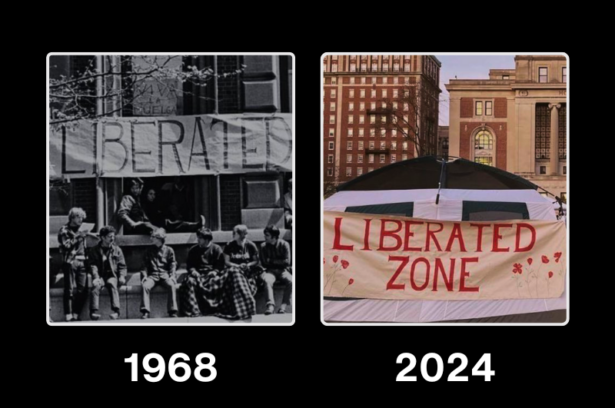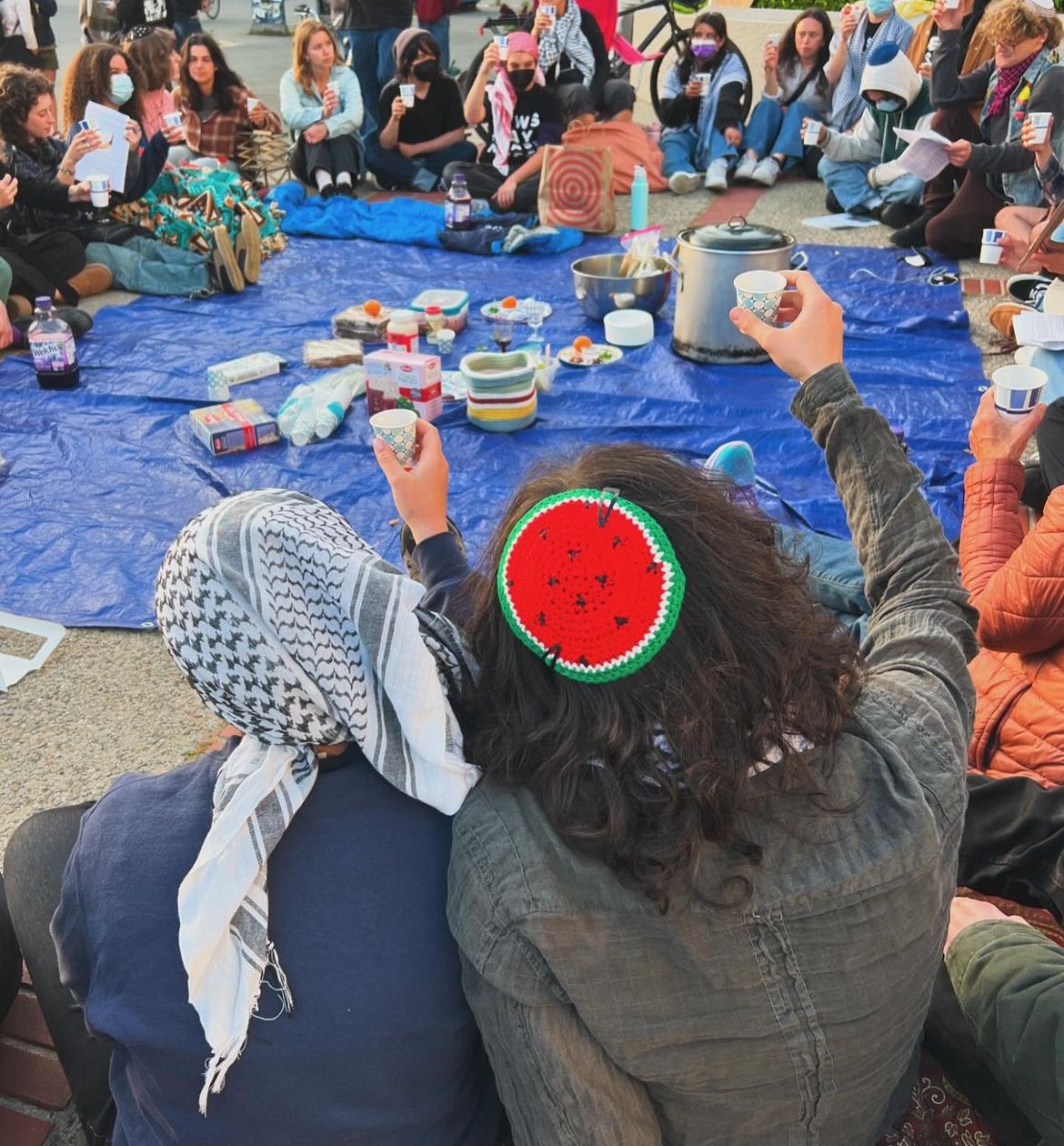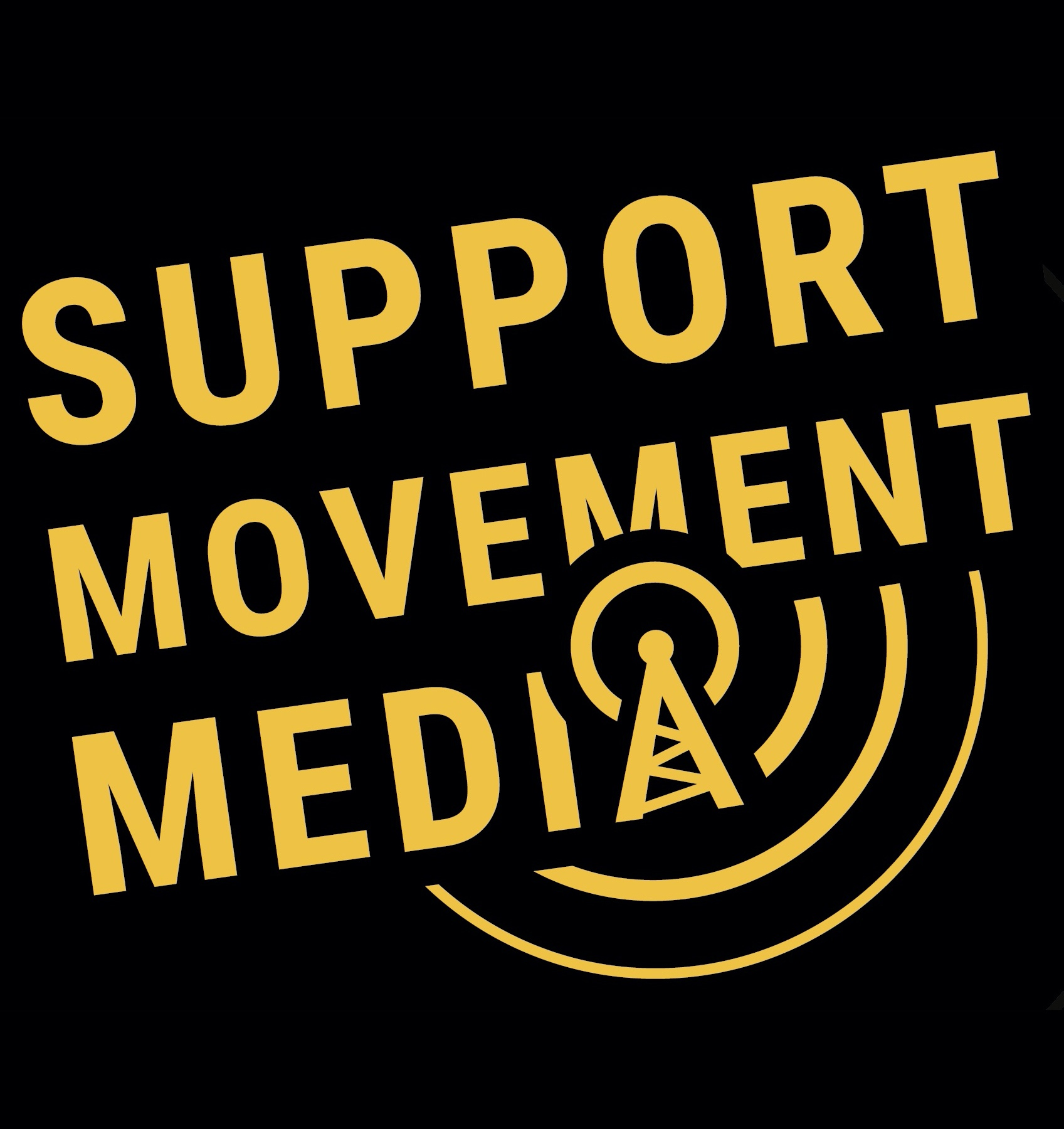Gaza solidarity protests on college campuses have gripped the U.S., particularly as encampments are being violently shut down by police with the approval of university administrators. At a time when opinion about Israel’s actions in Gaza is split, these protests have a tremendous opportunity to move the needle by forcing Americans to engage with student critiques of Israel. The students’ reasonable demands and peaceful demonstrations — when put in contrast with violent police repression — have the potential to engender massive empathy for the pro-Palestine cause.
Yet, as this whirlwind moment is sweeping the nation, media and universities are delegitimizing the protests, threatening their ability to resonate with larger audiences. They are weaving a narrative that the students are violent, hateful, intransigent and a danger to campus life. If these narratives become the dominant story for Americans, student protests may lose their chance to create greater understanding of Israel’s crimes and U.S. institutional complicity in them.
To avoid this potential outcome, student encampments and pro-Palestine organizations should be making concerted efforts to amplify the utter reasonableness and peaceful nature of their protests. Many student journalists and campus organizations have been doing such work already, but their efforts need bolstering. The more empathy grows for the students, the more likely Americans at large will be swayed by arguments pointing out Israel’s heinous crimes and U.S. support of them. Moving more focus to protesters — while retaining messaging about the genocide itself — could bring about a wave of support that finally leads to tangible action by political actors and institutions.
Major media characterizations of student protest
Over the past eight months, several major media outlets and political figures have painted pro-Palestine protesters as uninformed, hateful and swayed by propaganda. Starting in November 2023, major media have been dismissing pro-Palestine student protesters as manipulated by propaganda on social media. On MSNBC’s “Morning Joe,” Rep. Jared Moskowitz claimed that Americans, particularly young people, “are being manipulated by psy-ops by China and Russia…” Sens. Marco Rubio and Josh Hawley, along with Nikki Haley, were also making a media tour at the time condemning TikTok specifically for “distort[ing] the world picture that America’s young people encounter.” Even the New York Times ran a story warning of Hamas’ “broad, sophisticated media strategy,” citing a report from the Institute for Strategic Dialogue and an Israeli social media intelligence company named Cyabra.
Now, in light of escalated student protest at their encampment sites, dismissal continues. Israeli Prime Minister Benjamin Netanyahu compared student encampments to pro-Nazi student groups of the 1930s and Texas Gov. Greg Abbott called them “hate-filled, antisemitic protests.” Right-wing media has followed suit, as Sean Hannity reported the protests featuring “signs praising Hamas, praising terrorism,” and Laura Ingraham called protesters “vicious antisemites” and a “pro-Hamas movement … moving faster than STDs.” In the same segment, Ingraham also characterized student protesters as “entitled kids, poorly raised, who live in a natural state of entitlement and sloth.” Even supposedly liberal MSNBC host Joe Scarborough, in a segment on Columbia protests on April 30, called protesters, “white, woke, elitist, pampered … children from wealthy families … [who] go out and start shouting at Jews.”
Previous Coverage
 Columbia students are sick at heart — just as we were in ‘68
Columbia students are sick at heart — just as we were in ‘68While not all responses are so blatantly hostile to the students, many still leverage the same critiques in a more measured tone. CNN recently reported a line from the NYPD claiming that “outside agitators” were attempting to make Columbia’s protests into “something far more sinister,” and quoted New York City Mayor Eric Adams saying that police entered Columbia’s campus to remove them.
But the “outside agitator” narrative is not as it seems, as PolitiFact notes, because these “outsiders” are largely peaceful community members hoping to support the protest — and the agitator narrative has been used historically to dismiss legitimate protest. In the case of Northeastern University, whose administration broke up their student encampment by claiming it was “infiltrated by professional organizers” and that there was “use of virulent antisemitic slurs,” the claims have been debunked by eyewitness footage and testimony.
In total, the narrative being spread about campus protesters is — in the mildest form — that they have moved from being peaceful to a mixed group of dangerous students and outsiders. The most derogatory depict them as entitled, hateful antisemites supporting terrorism. If these narratives become the dominant interpretation of the protests for most Americans, students will lose this opportunity to change public opinion and help force an end to the violence in Gaza.
History eventually sides with groups that are viewed empathetically
During historical protests in the United States, moments of harsh repression of protesters have become linked with changes in opinion that moved the country towards justice. For example, to commemorate the 50th anniversary of the Kent State shooting during anti-Vietnam student protests, NBC published an article citing a Nixon-commissioned report on campus unrest that said “A nation driven to use weapons of war upon its youth is a nation on the edge of chaos.” MSNBC host Joe Scarborough, also reflecting on the anniversary, described the shooting as “shocking, unbelievable that college students protesting on campus were gunned down.”
Notably, the same NBC clip from “Morning Joe” recounts initial government responses to the protests and shooting. It quotes former Vice President Spiro Agnew calling protesters “overprivileged, underdisciplined, irresponsible children of the well-to-do blasé permissivists.” It also quotes Nixon as having been recorded off-camera calling student protesters “bums.” Yet in the aftermath of the shooting — and outrage that followed — the administration was forced to change its tune.
A large amount of media studies and psychological research shows that individuals are very unlikely to change their mind about issues when counternarratives are presented by groups they view unfavorably. Building empathy for a dissenting group can actually make their messages more likely to sway those who believe the dominant narrative. Unfortunately, as in the case of Kent State, repression of a group can also build further empathy and shock people out of their beliefs, but only if the repressed group is viewed as worthy of that empathy.
Media campaigns can build support for protestors by telling the truth
There is a similar opportunity for student protesters and their allies to clearly depict the truth about the encampments. A great deal of that has already been done by student newspapers, supportive professors or the campus organizations themselves. Notably, campus organizations have posted scores of first-hand footage of police crackdowns on the encampments, including capturing brutal arrests of faculty and students, as well as police using pepper spray and rubber bullets.
Social media has played such an important role in how the narrative has been shaped that — in a May 3 keynote at the McCain Institute — Sen. Mitt Romney and Secretary of State Antony Blinken both pointed to difficulties controlling the narrative about Gaza given the new media ecosystem.
These uses of media to amplify the truth about encampments can be expanded in key ways to foster even greater empathy with the protesters. For starters, certain widely resonant aspects of the protests should be continuously uplifted to form a strong social framing: focusing on the peaceful and constructive nature of the encampments, the diverse and multi-faith composition of the groups, and of the brutality of the police crackdowns in contrast. Then, student groups and supportive organizations should continue to spread these messages using media methods they have control over, like social media and op-eds.
In contrast to Scarborough’s claims that protesters are white children of elites, I have seen nothing but groups that are truly diverse — with many leaders being Palestinian, Arab, South Asian, Black or otherwise non-white — when visiting encampments and protests around Boston area universities (including Tufts, Northeastern, MIT and Harvard).

My local encampment at Tufts, which has since disbanded, was also impressively multi-faith, with large groups of both Muslim and Jewish organizers getting along amicably. The encampment even held Seders for Jewish students and protesters wanting to celebrate Passover. At other times, their activities included an array of teach-ins about diverse topics, collectively formed libraries, multi-faith worship, traditional dancing, group meals and a deep sense of cooperation. Other campuses have noted the same.
In the minds of many Americans, peace, diversity and inclusivity are values that mark what it means to be a great society. There is a reason that major media has painted the protesters as all white, elite and hateful: They know their audiences’ values and want to make every effort to depict protesters as being against our highest ideals.
But in truth, the encampments are beautiful examples of some of our greatest social ideals at work. Foregrounding these aspects of the protests could sway many minds across the U.S., pushing them to empathize with students and associate with their group — a key aspect of media psychology that opens audiences up to student messaging and inoculates them against further demonization of the movement.
Some student protesters have understandably exercised tight control of their media relations, noting that large journalism outlets often interview students only to misrepresent them later. Social media and op-eds are, again, one way around that problem — since they allow information to be broadcast with minimal filtering. Students aren’t the only ones who can do this. Supportive organizations can also use their platforms to truthfully depict students and the beautiful nature of their protest.
From working with student organizers across campuses, I’ve observed a frustration and worry that the media coverage of their protests is taking away from coverage of actual issues in Gaza. But it’s not a zero-sum game. By focusing on the protests and their repression and building empathy with wider audiences, student activists are creating an opportunity for messages about Israeli and U.S. crimes to resonate and actually shift opinion. If students can gain the support of the nation, they will obtain a rare power to break through the usual media landscape. What’s more, if they can gain greater trust than major media and widely broadcast their rationale for protest, other powerful political actors will have no choice but to follow along or risk becoming ostracized.

Forming the wave that turns the tide of opinion
There are moments in U.S. history where protest and repression can rapidly change the national mood, making a previously unpopular cause into a worthy one — and affect tremendous material change. These moments seem to hinge on the protesters being seen as relatable, and undeserving of repression and violence. In the Kent State case, empathy had to be built with students in order for the harsh National Guard violence to be perceived as utterly unjust, and the wars in Southeast Asia as equally unjust. A similar case holds here, but major media and university relations are pushing to delegitimize protesters and withdraw empathy for them, threatening the ability of Palestine solidarity encampments to widely resonate and open more eyes to the ongoing genocide.
One of the major levers that normal people have in the U.S. political system is to sway opinion about institutions and politicians, threatening their support and livelihoods. Every lever must be used and considered to achieve real change that could end the ongoing genocide in Gaza. Students and their supporters have an incredible opportunity to do so in this moment, and history could look back at this as an inflection point that turned the tide and helped stop the madness.

Nicholas,
I love your background and commitment to what I call “global citizenship” both
the physical and social environment…check out my journey Google “noel tichy” for 14 books and tons of articles and projects around the world dealing with global citizenshp and engaging students, faculty local communities.
One of my books, THE ETHICAL CHALLENGE, Jossey-Bass, 2003 has projects I have helped lead around the world
My book JUDGEMENT with Warren Bennis 2007 has more projects around the world that I have partnered with not for profits, corporations and academics